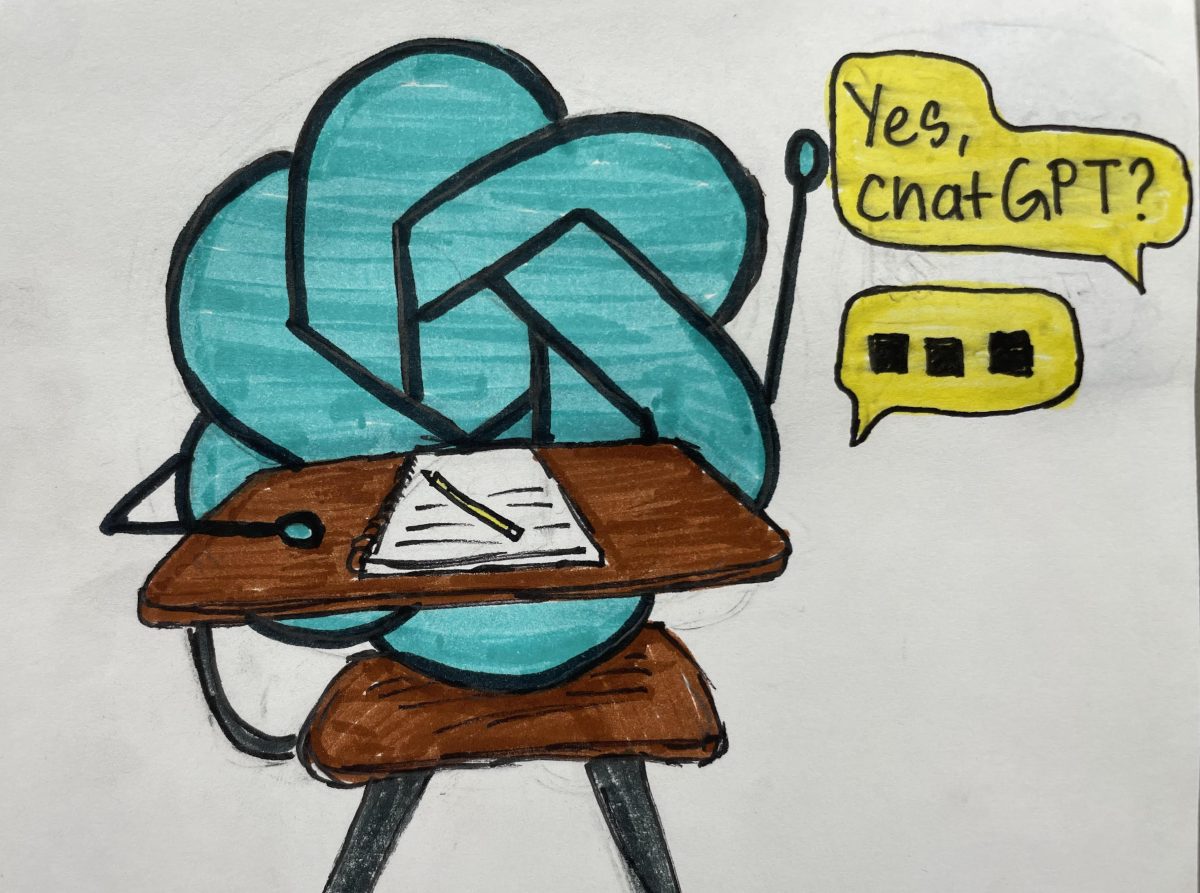On November 30th, 2022, the digital landscape changed forever. On that fateful fall day, Open AI released the latest update of their artificial intelligence chatbot, ChatGPT. Chat GPT could answer your questions, write you an email, and do your homework. The headlines started flooding in, The Atlantic reported on “The End of High-School English,” and The New York Times asked “How Could AI Destroy Humanity” as the world grappled with the changes ChatGPT would bring.
Almost a year has passed since ChatGPT was launched, and the world has yet to end. There’s been no appearance of the Terminator, artificial intelligence is yet to replace humanity, and students still have to write their own essays in English class. So one must ask, what happened? It’s not that AI hasn’t changed the world, it just hasn’t been the humanity-ending force some feared it would be. As many of the people discussing the future consequences of AI predicted, one of the areas most impacted by AI has been education. ChatGPT, and its groundbreaking ability to take prompts and spit out comprehensive responses, has amassed millions of users since it was released. Of these users, many are students using ChatGPT to help with schoolwork. Forbes found that “43% of college students overall say they’ve had experience using AI tools like ChatGPT, and half of those acknowledge turning to those tools to work on assignments or exams.”
For students who don’t feel like doing school work, ChatGPT is an essay writing, homework solving, and project completing miracle. For educators, ChatGPT is a problem. The chatbox’s ability to produce decent responses makes it hard for teachers to catch, and forces them to spend valuable time scanning submissions for AI generated answers. English teacher Anne Marie Dominguez expressed her concerns about the impact that using AI is having on student’s learning. “I’m just more wary… of making sure that [students] understand, ‘this is your work and anything you do to circumvent that [responsibility, then] you’re only cheating yourself in terms of acquiring skills and knowledge and what you have to do’,” Dominguez said.
Overall, AI is seen as a major threat to education and academic integrity that needs to be addressed. In response to growing concerns about AI, schools were quick to take action. Most schools forbid the use of AI on assignments, and some schools, such as New York City Public Schools and the Los Angeles Unified School District, went as far as banning the site entirely. However, as teachers adjust their approach to assessing students, a new narrative surrounding the role AI will play in education has been emerging.
More and more people are beginning to see how AI could be used to improve education. A recent headline from The New York Times illustrates this new perspective: “Don’t Ban ChatGPT in Schools. Teach With It”. AI, like ChatGPT, is a powerful tool and if it is used correctly, it could be a valuable resource for teachers and students alike. Companies who produce educational technology, like Khan Academy, Grammarly, Duolingo, and Quizlet, have already started investigating different ways to incorporate AI in their services.
The first step to using AI as a tool for education is strengthening teachers’ understanding of AI and its various applications. Teachers are on the frontlines, facing a unique set of challenges every day in their classroom. To address this, many schools have had staff meetings to discuss AI and the changes it is creating in education. BSM held a seminar led by Social Studies Teacher Cherie Vroman on AI for teachers earlier this year. “[We] talked about the detection tools that are out there, and how reliable the detection tools are… [as well as] strategies to implement in the classroom to try to eliminate AI use, when it’s not appropriate to use… And then we did spend some time brainstorming or talking about some cases where AI might be helpful or how it could be used in the classroom,” Vroman said.
Vroman has spent a good amount of time playing around with AI to see how it can be used to help teachers and students. One way Vroman thinks AI could help improve learning is as a private tutor, making information more accessible to students. “I remember I was writing a quiz last year… and I saw [some of] the terminology the book used… I know what that means, but I knew probably 90% of my students didn’t … And I thought…could AI help them if they asked?’ [and it] … kicked back a great response,” Vroman said.
I remember I was writing a quiz last year… and I saw [some of] the terminology the book used… I know what that means, but I knew probably 90% of my students didn’t … And I thought…could AI help them if they asked?’ [and it] … kicked back a great response
— Cherie Vroman
Despite the opportunities to use AI as a tool for educators, it is still an imperfect tool and should be used with caution. At the moment, AI is only as reliable as the information it is trained on. Its responses are as flawed as a person’s would be, and has the potential to give incorrect or misleading information. When people do research, they have the ability to check the validity of their sources and the information they are receiving. Vroman explained that this does not happen when someone uses AI. “When you have AI do the work, you leave that step out. You’re relying on a third party who may or may not care about what kind of sources they’ve used to program this particular computer equipment,” Vroman said.
If educating teachers on AI remains a priority, and if people continue to be aware of the risks of AI, we could be entering a new era for education. Whether functioning as a personal tutor, helping teachers make worksheets, or used in a class project, there are plenty of roles for AI to play in education.











































